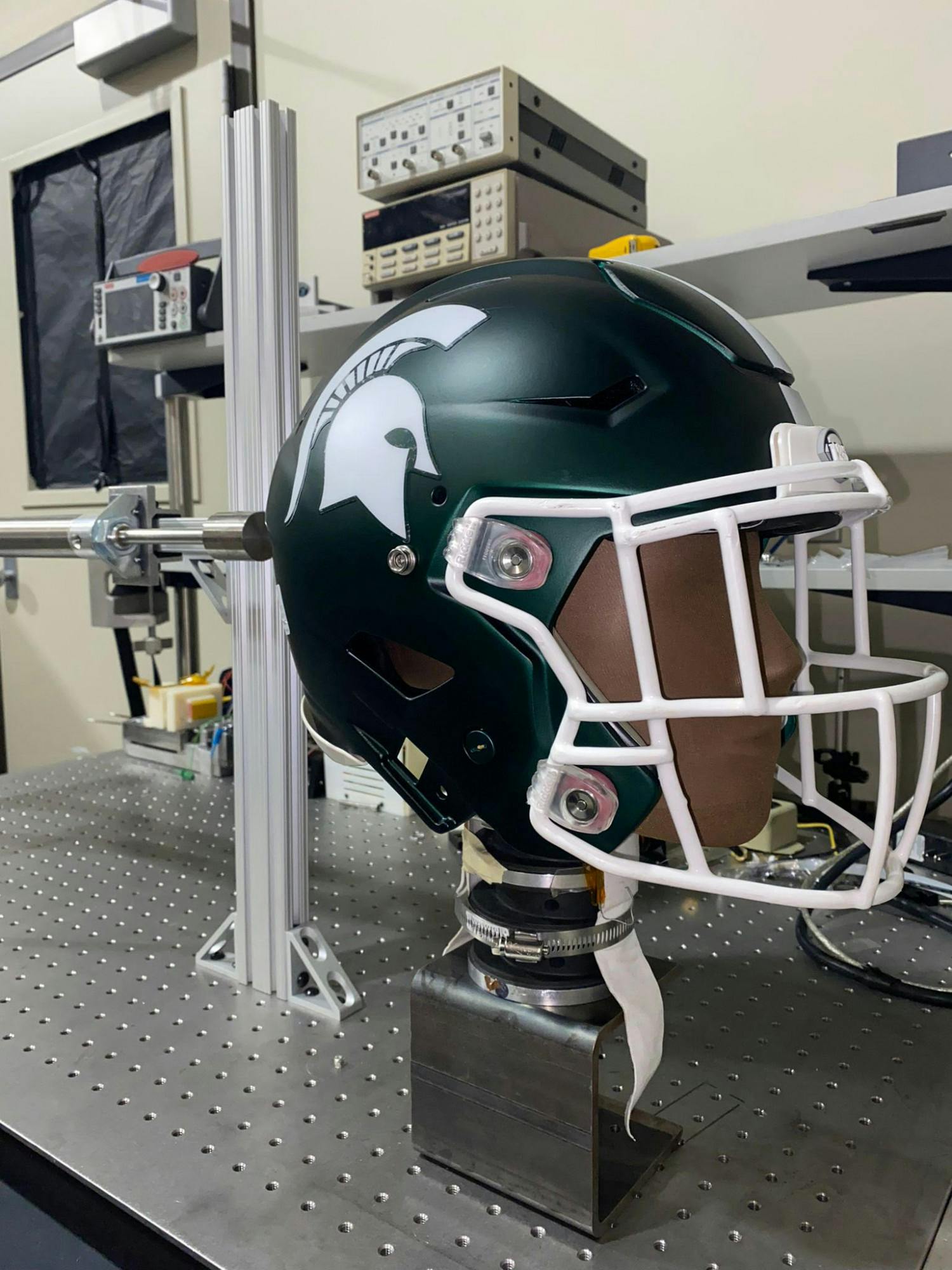Three years ago, MSU researchers began working to harvest mechanical energy, which can be as simple as taking a step. The goal was to take mechanical energy and convert it into electrical energy.
Then, when researchers discovered the conversion for this would be too difficult to successfully achieve, they decided to look in a new direction.
“I went to an MSU football game and was lucky to have a friend who had really close tickets," Electrical and Computer Engineering professor Nelson Sepúlveda said. "That was the first time that I ever saw a football game that close and I realized those guys played themselves pretty hard. I thought, ‘I’m going to try my best to see if a device can be used to help this.’"
Sepúlveda and two graduate students, Henry Dsouza and Gerardo Morales-Torres, have since begun studying a way to catch injuries before they progress and worsen.
Dsouza is the mastermind behind the project. He was the first to propose the idea of looking further into sports training. The research team first investigated ways to monitor movement during practices to watch for and prevent possible lesions, or damage or abnormal change in the tissue of an organism.
“For example, you could put a patch on the baseball pitcher's hand and that will basically tell the coach what is the type of movement that is being generated,” Sepúlveda said. “It gives some further feedback for further training or even corrections that could lead ... to hurting himself or herself. That can potentially lead to injuries ... Whenever there’s a mechanical input in the form of stress or strain, there’s an electrical response."
Once this study was completed and published, Sepúlveda and his students decided to take it a step further.
Henry then proposed the idea of utilizing a bandage to seek out concussions in football players. The others jumped on board.
The National Science Foundation presented MSU with a grant to fund the project, and they got to work.
“When I got (to Michigan State), this was one of many projects that my research group was working on," Morales-Torres said. "It caught my attention ... I saw the potential of different applications that the bandage could provide. Not only in sports like football, but also in medical stuff or monitoring movement in the human body."
How does it work?
The goal is to create a device that can detect potential concussions without interfering with the game. It’s self-powered, compact and doesn’t require a power source to operate.
“We have a bandage-like device that attaches to the neck,” Morales-Torres said. “When the head faces an impact, the neck will move and the device captures the mechanical energy perceived by the neck and converts that into electrical energy that the computer can capture and we can analyze and study for concussions."
Due to the positioning of the bandage on the neck, it can accurately read the movements in the head while allowing athletes to play as they normally would. These self-powered sensors also work without hindering players' performance.
“At the beginning, we thought, let’s see if we could develop patches that we can put at places of impact. So we were thinking about the forehead ... cheekbones, etc.,” Sepúlveda said. “We wanted it to be as oblivious to the athlete as possible."
As they inquired further, they discovered placing the bandage on the neck, rather than on high impact areas, would be easier to monitor possible mild traumatic brain injuries.
What’s the status of the device?
So far, only dummies have been utilized for testing purposes. The device isn’t cleared to be tried by athletes. There are necessary steps that need to be implemented prior to bringing people into the picture.
“In the future, we hope to make it wireless,” Morales-Torres said. “Right now, the setup is big and we have a lot of cables attached.”
Dsouza said they are still a long way off from doing a trial run on athletes.
Support student media!
Please consider donating to The State News and help fund the future of journalism.
"We’ve just demonstrated that this patch can actually work with a pivotal hit motion,” Dsouza said. “First and foremost, we need to make the system release so that it can communicate all of the signals to a coach or an adult."
Researchers can see this being implemented into other high-impact sports, and not solely football. These sports include hockey and boxing where athletes are more prone to minor traumatic brain injuries.
“Right now the device should not be a substitute of any medical professional's opinion regarding whether someone has a concussion or not,” Morales-Torres said. “We’re trying to get there."
Discussion
Share and discuss “The future of sports medicine: MSU researchers develop bandages to detect concussions” on social media.






